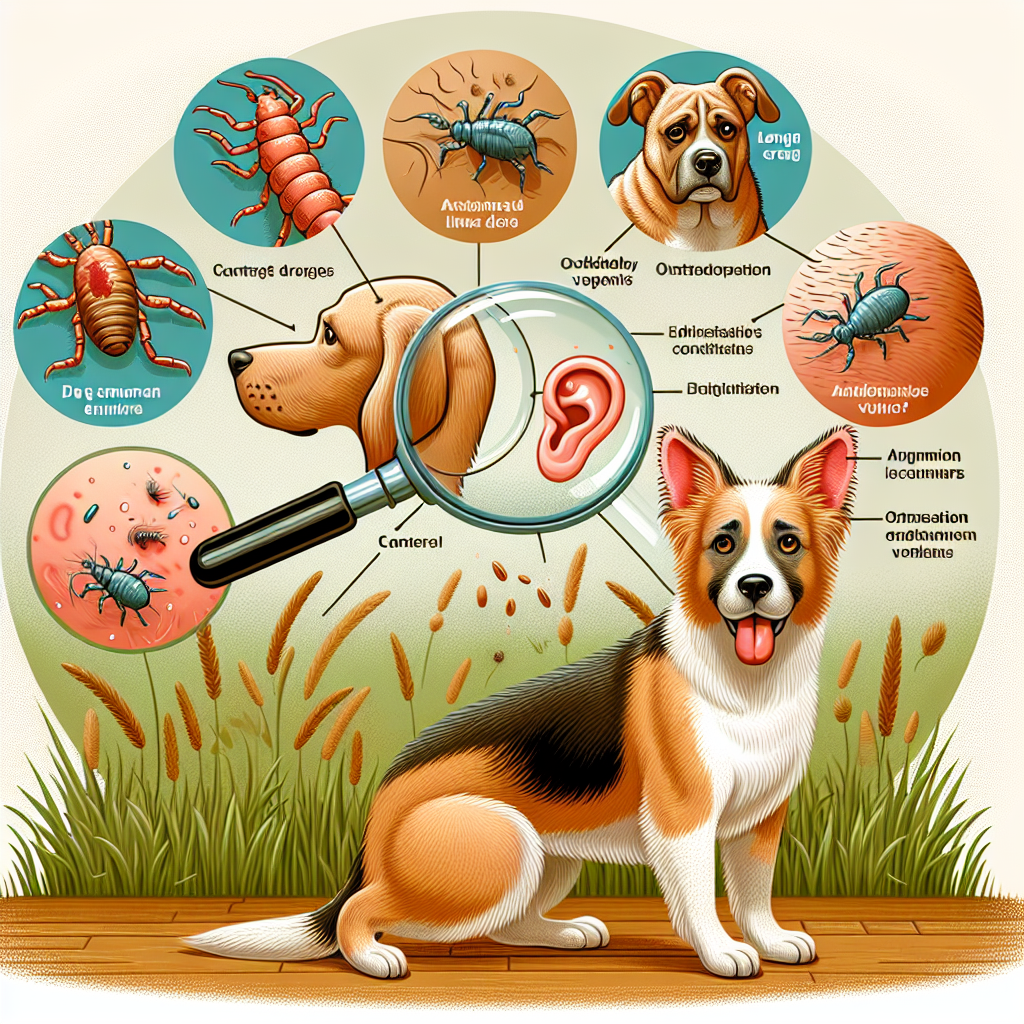Understanding how dogs contract ear mites is crucial for every pet owner concerned about their furry friend’s well-being. These tiny parasites can lead to significant discomfort and health issues if not addressed promptly. As a responsible pet parent, knowing the intricacies of ear mite infestations can help protect your beloved dog from unnecessary suffering. In this article, we delve into the causes behind ear mite infestation in dogs and explore effective strategies for symptom recognition and prevention.
The Causes Behind Ear Mite Infestation in Dogs
Ear mites, scientifically known as Otodectes cynotis, are microscopic parasites that predominantly live in the ear canal of dogs. Understanding how dogs contract ear mites is key to prevention. These pests have a remarkable ability to spread rapidly, often through direct contact with infected animals. This is particularly common in multi-pet households or environments such as shelters, where the chances of cross-infection are heightened. Once a dog comes into contact with an infested animal, it’s only a matter of time before these unwelcome guests take residence in its ears.
The environmental factors surrounding a dog’s habitat also play a significant role in ear mite infestations. Dogs that spend a lot of time outdoors or in close contact with other animals are at a higher risk of contracting these parasites. Mites can survive for a short period off a host, allowing them to linger in bedding, grooming tools, or shared spaces. Additionally, seasonal changes can create favorable conditions for these pests, with higher rates of infestation often reported during warmer months when pets are more active outdoors.
Another under-discussed aspect of ear mite infestations is the significance of a dog’s overall health and immune system. Dogs with weakened immune systems due to illness, poor nutrition, or stress are more susceptible to infestations. It’s essential to maintain a robust health regimen for your pet, including regular veterinary check-ups and vaccinations, to mitigate the impact of ear mites and other parasites. By addressing these factors, pet owners can significantly reduce their dog’s risk of contracting ear mites.
Symptoms and Prevention: Protecting Your Dog from Ear Mites
Recognizing the symptoms of ear mite infestations is crucial for early intervention. Dogs may exhibit behaviors such as excessive head shaking, scratching at their ears, or rubbing their ears against furniture or the ground. Affected dogs can also develop a foul-smelling discharge or dark wax buildup in the ear canal, which is often a telltale sign of ear mites. Identifying these symptoms early can prevent further complications, such as ear infections or more severe health issues.
Prevention is always better than cure when it comes to ear mites. Regular grooming, including ear cleaning, can help maintain ear health and prevent infestations. Using specialized pet-safe ear cleaners can assist in keeping the ear canal dry and free from debris, making it less hospitable for mites. Additionally, routine veterinary visits should include ear examinations, where veterinarians can detect early signs of infestation and recommend appropriate treatments if necessary.
Moreover, being vigilant about your dog’s environment can significantly decrease the risk of ear mite infestations. If you have multiple pets, consider segregating them for a while if one is diagnosed with ear mites. Regularly washing bedding, toys, and grooming tools can eliminate potential breeding grounds for these parasites. By adopting a proactive approach to your dog’s health and environment, you can effectively keep ear mites at bay while ensuring your furry companion remains comfortable and happy.
Understanding how dogs contract ear mites empowers pet owners with the knowledge to protect their dogs effectively. By recognizing the causes and symptoms of infestations, along with employing proactive prevention strategies, you can safeguard your beloved pet from discomfort and health complications. Remember, your dog relies on you for protection—taking the initiative to stay informed ensures your furry friend can live a happy, itch-free life. For more expert insights and tips on maintaining your dog’s health, stay connected with us!
Measuring Your Dog’s Height: A Comprehensive GuideUnderstanding How Dogs Become Infested with FleasUnderstanding the Lifespan of Pug Dogs: What to ExpectRelevant LinkRelevant LinkRelevant Link
